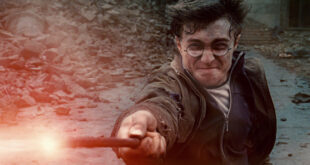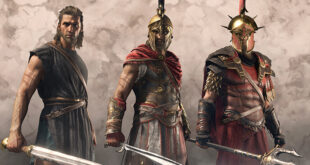The long take — a sequence shot in one unbroken camera move — isn’t easy to pull off. Many films are remembered for such virtuosity. Think Alfred Hitchcock’s “Rope,” which appears as one continuous take; the Battle of Dunkirk shot in the middle of Joe Wright’s “Atonement”; and the 17-minute unbroken visual at the beginning of Alfonso Cuarón’s “Gravity.”
This year we can add a video game to that pantheon: The latest iteration of “God of War,” directed by Corly Barlog and shot by cinematographer Dori Arazi. The Sony Interactive Entertainment game, developed by Santa Monica Studio and released for the Playstation 4 console, is the eighth chapter of the action-adventure franchise that debuted in 2005.
“God of War” is made up of 100 long takes, totaling 25 to 35 hours of game play. “I had the strong instinct that not having a cut, especially as the game was played over time, would create a sense of immediacy,” says Borlog, whose initial inspiration was the late-’80s, early-’90s immersive theater event “Tony n’ Tina’s Wedding,” in which audience members interact with the cast.
When shopping the idea of a game made up of long takes, Borlog referred potential producers to John Woo’s “Hard Boiled,” which featured a long-take fight scene and a mix of action and drama. Ultimately, Sony Interactive took the leap.
Barlog sought out a cinematographer who could shoot the game like a film. “I needed someone who wouldn’t just move the camera with no motivation,” he says. Producer Tim Morton recommended Arazi, who teaches camera work for games at Global Cinematography Institute; the two met and clicked.
The target emotion for “God of War,” says Arazi, is empathy. Inspiration came from World War II found footage and from Steven Spielberg’s “Saving Private Ryan.” He also studied Alejandro G. Iñárritu’s “Birdman” and “The Revenant,” both of which feature long takes by DP Emmanuel Lubezki.
After careful previsualization and rehearsal, Arazi wielded a computer monitor in a metal frame, with markers that allow the system to capture the actors’ motion. “It functions similarly to a live-action camera, so it helps to bridge the gap of shooting an animated sequence as you would a live-action one,” he says.
Most challenging, he says, was finding the right balance between film and game: “What might work well for a proper movie would be too distracting in a combat scene [in the game].”
Arazi also had to figure out the right way to exit a scene — and thus hide the cuts. “We found spots to put the camera down so it could be picked up by the game play or another scene, as if we’d never paused,” he explains.
Having sold 3.1 million units in its first three days on the market, “God of War 9” is on its way to another blockbuster success for the franchise. “It was an expensive, risky, crazy idea and extremely exhausting to do,” says Borlog. But, adds Arazi, “the game medium is becoming a really mature and viable way to tell a story.”



